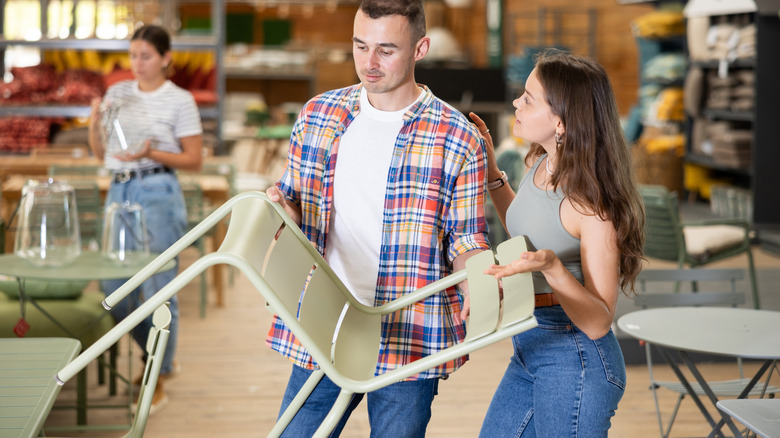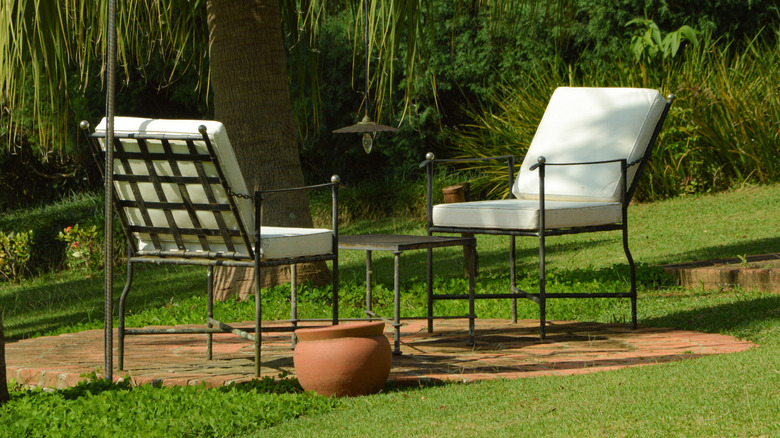Cast Aluminum Vs Cast Iron Outdoor Furniture: Which Is Best For Your Yard?
When it comes to designing your dream patio, the materials you choose are vital to the aesthetic you create. From wicker to metal, every material offers trendy ideas for designing your perfect patio aesthetic. If you're looking for that sleek metallic style, two common options are cast aluminum and cast iron. While both are metal, they differ greatly from weight, design, and maintenance. Deciding between the two materials ultimately depends on exactly what you're looking for.
Beginning from the formation process for each material, it's easy to spot some differences. Cast aluminum is made by pouring molten aluminum into a mold. It is then left to cool and solidify, taking the shape of the mold. Cast iron is made by pouring molten iron and scrap metal alloys, like carbon, silicon, and manganese, into a mold. These different processes lead to cast aluminum being a more lightweight, easily transportable material and cast iron being a more durable and strong material. These are just a few things that may factor into your decision of which metal is better for your furniture.
Cast aluminum: pros and cons
Cast aluminum is a common material found in everyday lawn items and furniture. This is the case for many reasons. The easier molding process allows for more sleek and modern designs. The lightweight nature of cast aluminum makes transportation easier, keeping pricing and carbon footprint effects lower. It is also able to resist high temperatures and has a higher tensile strength than cast iron overall. When it comes to weatherproofing, cast aluminum is a rust-resistant patio furniture you'll want in your space. The only maintenance cast aluminum needs is a regular cleaning with soap and water.
When considering cast aluminum, it is also important to note its disadvantages before making any decisions. Cast aluminum is unfortunately susceptible to damage due to its thinner, lightweight design. It is also difficult to repair once damaged. Despite this, cast aluminum tends to have a long lifespan that outperforms that of cast iron.
Cast iron: pros and cons
There are benefits of choosing cast iron patio furniture. It's a classic for a reason and it's built to last. Cast iron is often found in ornamental objects, like statues or railings. If you want an ornate yet rugged, antique style, cast iron might be the perfect material for you. Modern creations may borrow from this style or alter the material into something new, but if you're feeling thrifty, you can keep an eye out for a classic set. When compared with cast aluminum, cast iron has a better machinability. It is highly durable and able to retain heat for a long time.
On the other hand, cast iron is less weatherproof than cast aluminum and rusts easily. This issue can be combated with a weatherproof coating. Unfortunately, cast iron is also highly brittle and significantly heavier than cast aluminum, making it difficult to transport, raising prices and carbon footprint effects. As long as you don't plan to rearrange your outdoor furnishings regularly, cast iron will happily stay in one place on your patio for a long time.


